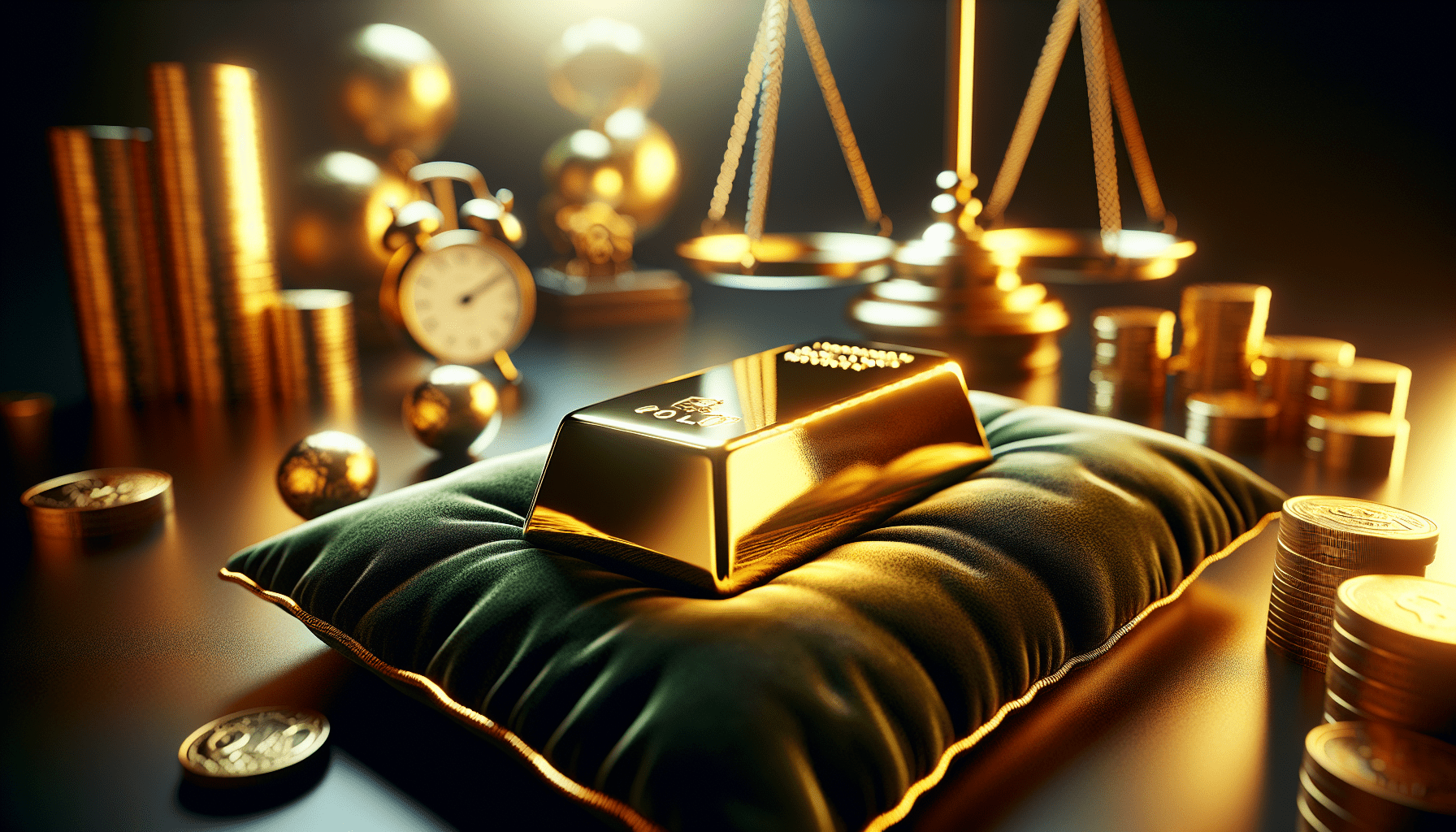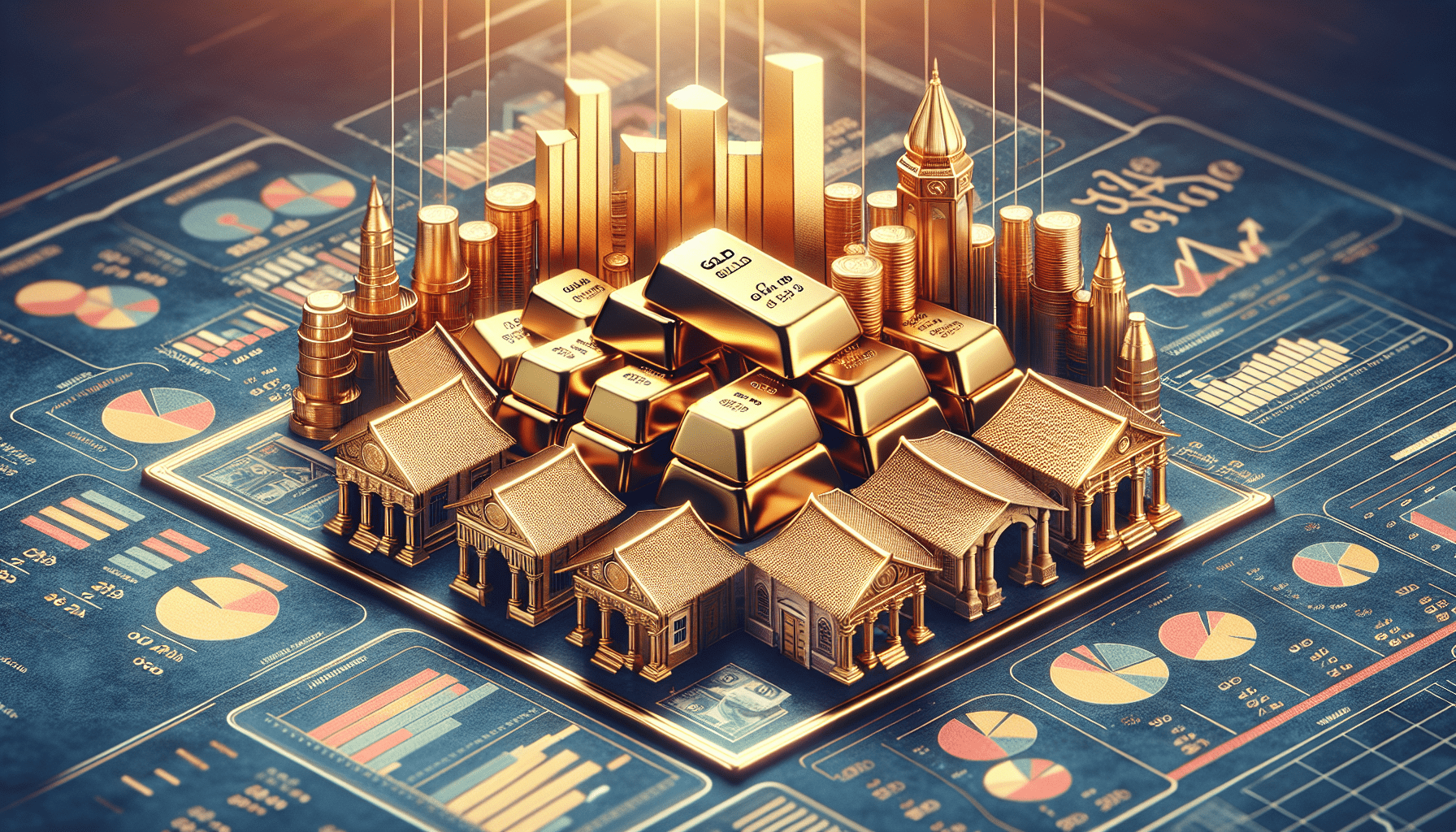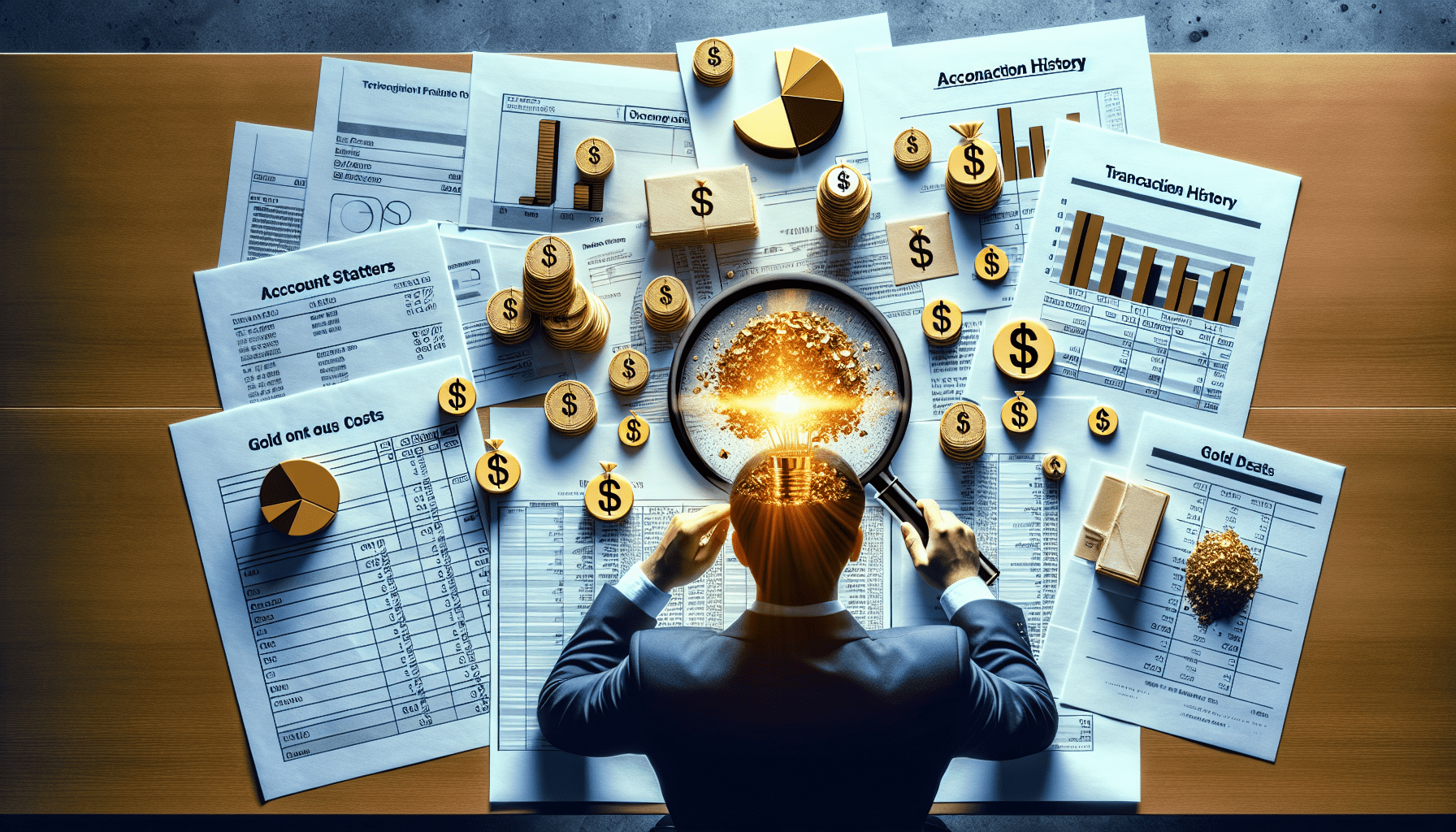Deciding whether to invest in gold or silver can be a daunting task, especially if you’re new to the world of precious metals. But fear not, as this article aims to provide you with the essential information needed to make an informed decision. We will explore the pros and cons of investing in gold and silver, analyze their historical performance, and take into account current market trends. By the end, you’ll have a clearer understanding of whether gold or silver is the better choice for you. So, let’s dive into this fascinating world of investment options and uncover the secrets of gold and silver.
Factors to Consider Before Investing
Investing in precious metals like gold and silver can be a wise financial decision if done with careful consideration. Before diving into the world of gold and silver investing, there are several crucial factors that you should take into account. These factors will help you make informed decisions and maximize your potential returns. Let’s explore each factor in detail.
Current Market Conditions
Before investing in gold or silver, it is essential to evaluate the current market conditions. Market conditions can greatly affect the price and value of these precious metals. Keep an eye on factors like interest rates, inflation rates, currency fluctuations, and global economic stability. Understanding the current market conditions will allow you to make better investment choices and minimize the risks associated with your investments.
Investment Goals
Define your investment goals before deciding to invest in gold or silver. Ask yourself why you want to invest in precious metals. Are you looking for long-term wealth preservation, portfolio diversification, or capital appreciation? Knowing your investment goals will help you determine the appropriate allocation of your investment portfolio and guide your decision-making process.
Risk Tolerance
Every investment comes with a certain level of risk, and it is crucial to understand your risk tolerance before investing in gold or silver. Consider how comfortable you are with volatility and fluctuations in the market. Precious metals, particularly silver, tend to be more volatile than other investment options. Assess your risk tolerance and align it with the potential risks associated with investing in gold and silver.
Diversification
Diversification is a vital strategy for mitigating risk in any investment portfolio. Gold and silver offer excellent diversification benefits due to their low correlation with other asset classes. By adding gold and silver to your investment portfolio, you can reduce the overall volatility and increase the stability of your investments. Evaluate how gold and silver can complement your existing investments and diversify your portfolio effectively.
Liquidity
Liquidity refers to the ease of buying or selling an investment without significantly impacting its market price. Gold and silver are generally considered highly liquid assets. However, the ease of converting your investments into cash may vary depending on the form of the precious metal you hold. Physical gold and silver may require additional steps to sell compared to investing in exchange-traded funds (ETFs) or futures contracts. Consider your liquidity needs and evaluate the options available to you.
Storage and Security
If you decide to invest in physical gold or silver, storage and security should be taken into account. Precious metals require safe and secure storage to protect their value. Ensure that you have considered the storage costs and have access to appropriate storage facilities or services. Additionally, insurance against theft or physical damage is essential to safeguard your investment.
Historical Performance
Examining the historical performance of gold and silver can provide insights into their potential as investment vehicles. Analyze the past price trends, returns, and volatility of gold and silver over different time frames. While historical performance doesn’t guarantee future results, it can help you understand the potential risks and rewards of investing in these precious metals.
Supply and Demand
The dynamics of supply and demand play a significant role in the pricing of gold and silver. Consider the factors influencing the supply and demand for these metals. For example, gold is influenced by jewelry demand, central bank buying, and investment demand. Silver, on the other hand, has industrial applications and is affected by economic growth and technological advancements. Understanding the supply and demand dynamics will provide a deeper understanding of the investment potential of gold and silver.
Industrial Use
Silver has extensive industrial applications, making it unique among precious metals. It is widely used in sectors such as electronics, solar panels, medical equipment, and batteries. This industrial demand can significantly impact the price of silver. Evaluate the current and projected growth in industrial applications to gauge the long-term investment potential of silver.
Inflation Hedge
Gold and silver are often seen as hedges against inflation. In times of rising inflation, the value of these precious metals tends to increase, preserving purchasing power. Consider the current and projected inflation rates when deciding to invest in gold or silver. Both metals have historically shown the ability to act as a hedge against inflation, making them attractive during uncertain economic times.
Now that we have examined the key factors to consider before investing, let’s compare the specific attributes of gold and silver to help you make an informed investment decision.
Comparison of Gold and Silver
When deciding between gold and silver as investment options, it is important to compare their various attributes. Let’s explore the key factors to consider when comparing gold and silver.
Value
Both gold and silver have intrinsic value due to their rarity and desirability. Gold, being rarer than silver, often carries a higher value. The value of gold is also influenced by demand from central banks and investors seeking a store of value. On the other hand, silver’s value is primarily driven by its industrial and investment demand. Assess the current and potential future value of gold and silver to determine which metal aligns better with your investment goals.
Price Volatility
Gold and silver exhibit different levels of price volatility. Generally, silver is more volatile than gold due to its lower value and higher industrial demand. Silver can experience significant price swings in response to economic conditions and market sentiment. Gold, being less volatile, is often considered a more stable investment option. Evaluate your risk tolerance and consider the potential price volatility when deciding between gold and silver.
Market Size
The market size of gold and silver differs significantly. The gold market is larger and more established compared to the silver market. This greater market size can provide higher liquidity and more stable price movements for gold. On the other hand, the silver market is relatively smaller and can be influenced more easily by supply and demand factors. Consider the market size and its impact on liquidity when comparing gold and silver.

Accessibility
Gold and silver can be accessed through various investment vehicles. Gold is widely available in the form of physical gold bullion, coins, ETFs, and futures contracts. Silver, similarly, can be obtained as physical silver coins, bars, ETFs, and futures contracts. Assess the accessibility of each metal and consider any associated costs or restrictions when choosing between gold and silver.
Industrial Demand
Silver has a significant advantage over gold in terms of industrial demand. Around 50% of silver’s annual demand comes from industrial applications. The growing demand for silver in sectors like technology, healthcare, and renewable energy can contribute to its long-term value. Evaluate the current and projected industrial demand for silver to understand its investment potential.
Storage Considerations
Physical gold and silver require proper storage to protect their value. Consider the storage requirements and associated costs for each metal. Gold, being dense and valuable, requires secure storage facilities or services. Silver, on the other hand, requires more space due to its lower value per unit of weight. Evaluate your storage capabilities and consider the costs involved when comparing gold and silver.
Trade and Liquidity
Both gold and silver offer high levels of liquidity, making them easy to buy and sell. Gold, due to its larger market and established trading infrastructure, generally offers higher liquidity compared to silver. However, liquidity can vary depending on the form of the metal you hold. Evaluate the trade volumes and liquidity of both gold and silver to ensure ease of transactions.
Historical Performance
Analyzing the historical performance of gold and silver can provide insights into their potential as investments. Assess the long-term price trends, returns, and volatility of both metals. Gold has a long-standing history of preserving value and acting as a safe-haven investment. Silver, while more volatile, has also shown significant price appreciation over time. Consider the historical performance when making a comparison between gold and silver.
Demand Factors
Different factors influence the demand for gold and silver. Gold is primarily driven by investment demand and central bank buying. It is also highly valued for its use in jewelry and as a store of value. Silver’s demand, as mentioned earlier, is influenced by both investment demand and industrial applications. Evaluate the various demand factors for gold and silver to gauge their potential as investments.
Economic Impact
Both gold and silver can be influenced by economic factors. Gold is often seen as a safe-haven asset during times of economic uncertainty and market volatility. It can provide a hedge against inflation and currency depreciation. Silver, being more closely tied to industrial demand, can be influenced by economic growth and technological advancements. Consider the economic impact on gold and silver when weighing your investment options.
Now that we have compared the attributes of gold and silver, let’s explore the pros and cons of investing in each of these precious metals separately.
Pros of Investing in Gold
Gold has long been considered a reliable investment option due to its unique characteristics. Here are some of the pros of investing in gold:
Store of Value
Gold has been revered as a store of value for centuries. It has maintained its purchasing power over time and has been used as a form of currency throughout history. Investing in gold can provide stability to your portfolio and preserve wealth during uncertain economic times.
Global Acceptance
Gold is recognized and accepted worldwide as a valuable asset. It is traded in major financial markets and can be easily bought and sold across different countries. This global acceptance ensures liquidity and ease of transactions for gold investors.
Diversification
Adding gold to your investment portfolio can enhance diversification. Gold often has a low correlation with other asset classes, such as stocks and bonds. This means that when other investments decline in value, gold can act as a hedge and help protect your portfolio from significant losses.
Inflation Hedge
Gold is often seen as a reliable hedge against inflation. During periods of rising inflation, the value of gold tends to increase, preserving your purchasing power. By investing in gold, you can protect your wealth from the erosive effects of inflation.
Safe-Haven Investment
gold is considered a safe-haven asset, meaning it tends to perform well during times of market uncertainty and economic instability. Investors often flock to gold during financial crises as a means of capital preservation. Investing in gold can provide stability and reduce the overall risk of your investment portfolio.
Limited Supply
Gold is a scarce resource, and its supply is limited. The annual gold production is relatively constant, and new discoveries of significant gold deposits are rare. This limited supply can contribute to its value over the long term.

Portfolio Stability
Gold’s stability can help balance out the volatility of other investments in your portfolio. It can act as a hedge against stock market declines or economic downturns. By adding gold to your portfolio, you can potentially reduce overall portfolio risk and achieve better stability.
Long-Term Growth Potential
Gold has demonstrated long-term growth potential. Over the past several decades, gold has experienced significant price appreciation. Investors who had the foresight to invest in gold during the early stages of its bull market have generally enjoyed high returns.
Historical Performance
When analyzing gold’s historical performance, it becomes evident that its value has stood the test of time. Despite short-term fluctuations, gold has maintained its purchasing power and acted as a reliable investment over the long run.
Potential for Higher Returns
Investing in gold offers the potential for higher returns compared to other investment options. During periods of economic uncertainty or inflation, the value of gold can surge, providing substantial gains for investors. By allocating a portion of your portfolio to gold, you can tap into this potential upside.
While gold offers several advantages as an investment, it is important to consider the potential drawbacks as well. Let’s explore the cons of investing in gold.
Cons of Investing in Gold
Like any investment, gold also has its downsides. It is crucial to understand these cons before committing to investing in gold:
Price Volatility
Gold can be subject to significant price volatility, especially in the short term. Rapid price swings can occur due to various factors, including changes in market sentiment, economic conditions, and geopolitical events. If you have a low risk tolerance or are looking for stable returns, gold’s price volatility may not align with your investment objectives.
High Transaction Costs
Investing in gold often involves transaction costs, which can impact your overall returns. These costs include premiums on physical gold purchases, storage fees, and markups when buying or selling the metal. Consider the associated expenses when evaluating the potential returns from investing in gold.
No Dividend or Interest Payments
Gold does not generate any income in the form of dividends or interest payments. Unlike stocks or bonds, which can provide regular cash flows, gold relies solely on its value appreciation to generate returns. If you are seeking regular income from your investments, gold may not fulfill that requirement.
Storage and Security Costs
If you choose to invest in physical gold, you will need to consider storage and security costs. Storing gold in a secure facility or safe deposit box comes with expenses. Additionally, insuring your gold investment against theft or damage is essential but also adds to the overall costs.
Limited Industrial Use
Unlike silver, gold has limited industrial use. Its primary demand comes from investment purposes and jewelry. As a result, gold’s price is primarily influenced by factors such as investor sentiment and macroeconomic conditions. The limited industrial demand can result in higher price volatility compared to silver.
Impact of Economic Factors
While gold is often seen as a safe-haven investment, it is not immune to economic factors. Economic conditions, such as interest rates, inflation rates, and currency movements, can influence gold prices. Assess the potential impact of economic factors on gold when considering it as an investment option.
Potential for Counterfeits
The physical nature of gold makes it susceptible to counterfeiting. Investors must be cautious when purchasing physical gold and ensure they acquire it from reputable sources. Counterfeit gold can not only result in financial losses but also diminish the value and reputation of your investment.
Market Manipulation
As with any widely traded asset, gold markets can be subject to manipulation. Price manipulation, such as spoofing or the spreading of false information, can artificially influence gold prices and create volatility. Watch out for signs of market manipulation and stay informed to make sound investment decisions.
Market Speculation
Gold markets can attract speculative investors, leading to increased volatility. Speculation can cause prices to deviate from inherent value and create short-term fluctuations. Consider your investment horizon and risk tolerance when navigating the gold market.

Foreign Exchange Risks
If you invest in gold denominated in a different currency, you will be exposed to foreign exchange risks. Fluctuations in currency exchange rates can impact the value of your gold investment when converting it back to your home currency. Evaluate the potential risks associated with foreign exchange when investing in gold.
Now that we have explored the pros and cons of investing in gold, let’s shift our focus to the advantages of investing in silver.
Pros of Investing in Silver
Silver offers unique advantages as an investment option. Here are some of the pros of investing in silver:
Affordability
Silver is more affordable than gold in terms of its price per ounce. This affordability makes silver more accessible to a broader range of investors. If you have a limited budget or want to start investing with smaller amounts, silver may be a suitable option.
Industrial Demand
Silver has extensive industrial applications, giving it a unique advantage over gold. It is used in various sectors such as electronics, solar panels, medical equipment, and batteries. The growing demand for silver in these industries provides a fundamental foundation for its value. Investing in silver allows you to participate in both its industrial and investment demand.
Store of Value
Like gold, silver has been used as a store of value for centuries. It has preserved wealth and provided a means of exchange throughout history. Investing in silver can be a prudent way to secure a portion of your wealth and protect against economic uncertainties.
Potential for High Returns
Silver has the potential for higher returns due to its greater price volatility compared to gold. The higher price swings can result in substantial gains for investors, especially during bull markets. If you are seeking investment opportunities with potential high returns, silver may be worth considering.
Safe-Haven Asset
Similar to gold, silver is often considered a safe-haven asset. During times of economic instability or market turbulence, investors tend to seek refuge in silver. It can provide a hedge against inflation, currency devaluation, and geopolitical uncertainties. By investing in silver, you can add a layer of resilience to your investment portfolio.
Historical Performance
While silver exhibits greater price volatility than gold, it has also demonstrated significant historical price appreciation. Silver’s price has experienced notable increases over the long term, making it an attractive investment option for those seeking capital appreciation.
Inflation Hedge
Silver, like gold, serves as an effective hedge against inflation. As the purchasing power of fiat currencies erodes due to rising inflation, the value of silver tends to rise. Investing in silver can help protect your wealth from the impact of inflation.
Diversification
Adding silver to your investment portfolio can enhance diversification. Silver’s price movements often differ from those of other asset classes, such as stocks and bonds. By diversifying your portfolio with silver, you can potentially reduce risk and achieve better overall stability.
Silver Stockpiles
The above-ground stockpiles of silver are relatively low compared to gold. This limited supply can contribute to its value over time, especially considering the increasing demand from industrial applications. The scarcity of silver can potentially lead to price appreciation over the long term.
Growing Investment Interest
Silver has been gaining investment interest in recent years. Investors are becoming more aware of its potential as an alternative investment and a hedge against economic uncertainties. The growing investment interest in silver can contribute to its price appreciation.
Now that we have explored the pros of investing in silver, let’s consider the potential drawbacks.
Cons of Investing in Silver
While silver offers several advantages, it also has its drawbacks. Consider the following cons of investing in silver:
Price Volatility
Silver tends to be more volatile than gold due to its lower value and higher industrial demand. The greater price volatility can lead to more significant price swings, creating both opportunities and risks for investors. Assess your risk tolerance and ability to handle price volatility when considering silver as an investment.
Industrial Cyclicality
Silver’s industrial demand makes it susceptible to economic cycles. During economic downturns or recessions, industrial demand for silver may decline, impacting its price. Consider the potential cyclicality of silver’s industrial demand and evaluate its impact on your investment strategy.
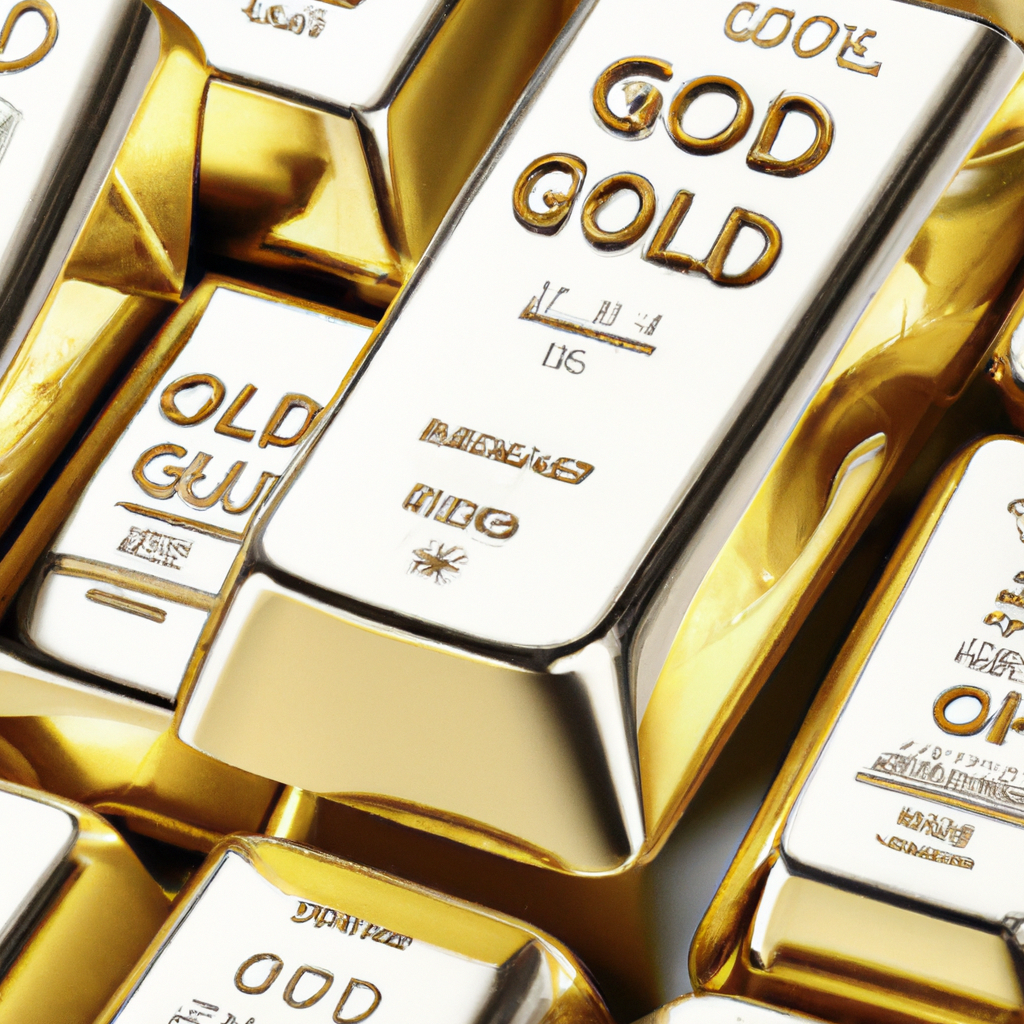
Storage and Security Costs
As with gold, investing in physical silver requires proper storage and security measures. Assess the storage costs and logistics involved when considering physical silver investments. If you choose to store silver at home, make sure you have appropriate security measures in place.
Market Manipulation
Silver markets, like gold markets, can be subject to market manipulation. Price manipulation tactics can lead to artificial price movements and increased volatility. Stay informed and vigilant to protect yourself from potential market manipulation.
Potential for Counterfeits
The physical nature of silver makes it susceptible to counterfeiting. Exercise caution when purchasing physical silver and ensure you source it from reputable dealers. Counterfeit silver can erode the value of your investment and lead to financial losses.
Limited Historical Performance
Silver has a shorter track record of historical performance compared to gold. While silver has experienced significant price appreciation in the past, its historical data cannot match the centuries-long performance of gold. Consider the limited historical performance of silver when making investment decisions.
Supply and Mine Production
The supply dynamics of silver can influence its price. While silver is relatively abundant compared to gold, fluctuations in mine production can impact its availability. As with any investment, understanding the supply and demand dynamics of silver is essential to assess its potential value.
Silver ETF Risks
Investing in silver through exchange-traded funds (ETFs) carries its own risks. ETFs are subject to management fees, tracking error, and counterparty risks. Additionally, the performance of silver ETFs may not perfectly align with the underlying price of physical silver. Evaluate the risks associated with silver ETFs before making your investment decision.
Liquidity Issues
While silver is considered a liquid asset, certain silver investments may have liquidity issues. Physical silver may require additional steps to sell compared to more readily traded financial instruments. Consider the liquidity requirements of your investment strategy and evaluate the ease of converting your silver investments into cash.
Currency Risks
If you invest in silver denominated in a different currency, you may be exposed to exchange rate risks. Fluctuations in currency exchange rates can impact the value of your silver investment when converted back to your home currency. Consider the potential currency risks associated with silver investments.
Now that we have discussed the pros and cons of investing in silver, let’s explore the benefits of diversifying your investment portfolio by combining both gold and silver.
Diversification Benefits
Investing in both gold and silver can provide diversification benefits to your investment portfolio. The combination of these two precious metals can help reduce risk and enhance long-term returns. Let’s explore the advantages of diversifying your portfolio with gold and silver.
Combining Gold and Silver
By combining gold and silver, you can leverage the unique attributes of each metal. Gold offers stability, a safe-haven status, and a store of value. Silver brings industrial demand, affordability, and potential for higher returns. The combination of both these metals can provide a broader diversification and exposure to different market dynamics.
Reducing Portfolio Risk
The correlation between gold and silver is relatively low, making them suitable for diversifying your portfolio. When one metal may exhibit price volatility or decline in value, the other metal may perform differently. By holding a combination of gold and silver, you can potentially reduce the overall risk of your portfolio.
Balancing Precious Metals
Allocating an appropriate balance between gold and silver can help achieve optimal diversification. The allocation should consider your investment goals, risk tolerance, and market conditions. A balanced approach ensures that the portfolio benefits from the unique characteristics of both precious metals.
Correlations with Other Assets
The low correlation between gold and silver not only helps diversify within the precious metals asset class but also provides diversification benefits to your overall investment portfolio. Combining gold and silver with other assets, such as stocks and bonds, can further enhance diversification and reduce portfolio risk.
Enhancing Long-Term Returns
The combination of gold and silver in a portfolio has the potential to enhance long-term returns. While each metal may exhibit its own price performance, the overall portfolio can benefit from diversification and exposure to different market conditions. This balanced approach can help capture opportunities for capital appreciation.
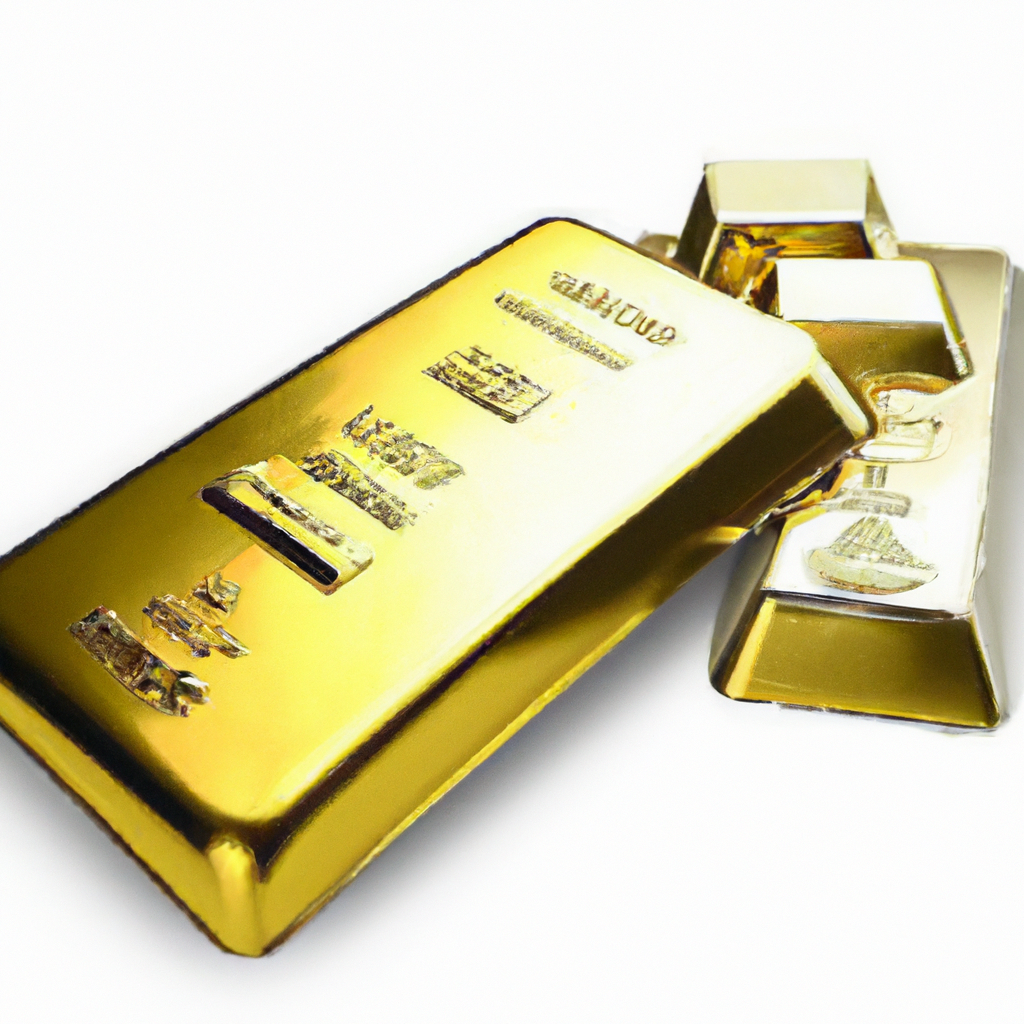
Overall Portfolio Allocation
The allocation to gold and silver in your portfolio depends on your individual investment goals and risk tolerance. Consider consulting with a financial advisor to determine the appropriate allocation based on your specific circumstances. The allocation may vary depending on market conditions and your long-term financial goals.
Practical Considerations
Incorporating both gold and silver into your investment portfolio requires careful planning and consideration of practical aspects. Evaluate the accessibility, storage requirements, and associated costs of each metal. Consider the impact on liquidity and ease of transactions. Practical considerations ensure that your investment strategy is feasible and aligns with your overall financial plan.
Monitoring and Rebalancing
Once you have diversified your portfolio with gold and silver, it is important to monitor and periodically rebalance your investments. Market conditions and prices of gold and silver can change over time, affecting the allocation of your portfolio. Regular monitoring and rebalancing allow you to maintain your desired asset allocation and ensure that your investments remain aligned with your goals.
Timing and Market Trends
Like any investment, timing plays a role in maximizing returns. Consider market trends and price movements of gold and silver when deciding the best time to invest or rebalance your portfolio. However, trying to time the market perfectly can be challenging. Focus on your long-term investment goals and make informed decisions based on fundamental analysis.
Expert Advice
Considering the complexity of investing in gold and silver, seeking expert advice can be advantageous. A financial advisor with experience in precious metals can help you navigate the intricacies of these markets. They can provide guidance on portfolio allocation, investment strategies, and risk management. Consulting with an expert ensures that your investment decisions are well-informed and aligned with your goals.
Now that we have explored the benefits of diversifying your portfolio with gold and silver, let’s turn our attention to the factors that influence the prices of these precious metals.
Factors Influencing Gold Prices
Several factors influence the price of gold. Understanding these factors is crucial for investors looking to make informed decisions. Let’s explore the key factors that impact gold prices:
Macroeconomic Factors
Gold prices can be influenced by macroeconomic factors such as economic growth, inflation rates, and interest rates. During periods of economic uncertainty, gold is often seen as a safe-haven asset, resulting in increased demand and higher prices. Economic indicators and market sentiment play a significant role in shaping gold prices.
Interest Rates and Monetary Policy
Changes in interest rates and monetary policy decisions by central banks can impact gold prices. When interest rates are low, the opportunity cost of holding non-yielding gold decreases, making it more attractive for investors. Conversely, rising interest rates can make gold relatively less appealing, potentially leading to lower demand and lower prices.
Geopolitical Events
Geopolitical events, such as conflicts, political tensions, or natural disasters, can influence gold prices. These events create uncertainty and drive investors towards safe-haven assets like gold. Market participants closely monitor geopolitical developments to assess their potential impact on gold prices.
Currency Movements
Gold prices are closely linked to currency movements, especially the US dollar. As gold is primarily priced in US dollars, a depreciation in the US dollar can make gold relatively cheaper and stimulate demand, resulting in higher prices. Conversely, a strengthening US dollar may put downward pressure on gold prices.
Supply and Demand Dynamics
The dynamics of supply and demand are fundamental drivers of gold prices. Fluctuations in gold mining production, central bank buying or selling, and jewelry demand can influence the supply side. Investment demand, exchange-traded funds (ETFs), and central bank reserves impact the demand for gold. Understanding the supply and demand dynamics is essential to assess gold’s price outlook.
Speculative Trading
Gold markets can be influenced by speculative trading activities. Speculators take positions on gold prices based on their expectations of future price movements. Their actions can create short-term price volatility but may not necessarily reflect the underlying value of gold. Monitor speculative trading activities to understand short-term price movements.
Gold Reserves
Central banks hold significant gold reserves, and their buying or selling activities can impact gold prices. Central bank purchases tend to increase demand and support higher prices. Conversely, if central banks decide to sell significant amounts of gold, it can put downward pressure on prices. Keep an eye on central bank actions to assess their potential impact on gold prices.
Inflation and Deflation Concerns
Gold is often seen as a hedge against inflation and, to some extent, deflation. Rising inflation erodes the value of fiat currencies and can drive investors towards gold as a means of preserving purchasing power. Similarly, during deflationary periods, gold’s relative stability and store of value characteristics can make it an attractive investment.
Central Bank Actions
Beyond gold reserves, central banks’ monetary policies can influence gold prices. Accommodative monetary policies, such as quantitative easing, tend to increase the money supply and can potentially lead to higher inflation expectations. These actions may make gold more appealing to investors, driving up demand and prices.
Market Sentiment
Market sentiment, investor psychology, and general market conditions also impact gold prices. Fear, uncertainty, or positive sentiment can drive buying or selling activities, influencing short-term price movements. Monitoring market sentiment through sentiment indicators and news can provide insights into potential price trends.
Now that we have explored the factors that influence gold prices, let’s shift our focus to the factors that impact silver prices.
Factors Influencing Silver Prices
Understanding the factors that drive silver prices is crucial for investors interested in this precious metal. Let’s explore the key factors that influence silver prices:
Industrial Demand
Silver’s industrial demand plays a crucial role in determining its price. Silver is widely used in various industries, including electronics, solar panels, medical equipment, and batteries. Changes in global economic conditions and technological advancements can drive fluctuations in silver prices based on its industrial applications.
Economic Growth
Global economic growth can impact silver prices. During times of economic expansion, the demand for silver in industrial sectors tends to increase, driving up prices. Conversely, economic slowdowns or recessions may lead to lower industrial demand for silver, potentially resulting in lower prices.
Currency Movements
Similar to gold, silver prices are influenced by currency movements, particularly the US dollar. A weaker US dollar relative to other currencies can make silver relatively cheaper and stimulate demand, resulting in higher prices. Conversely, a stronger US dollar may put downward pressure on silver prices.
Investor Sentiment
Investor sentiment and market conditions have a significant impact on silver prices. Silver can be influenced by short-term speculation and trading activities, leading to price volatility. Changes in sentiment and investor outlook towards the economy and financial markets can impact the demand and price of silver.
Silver Mine Production
Silver mine production levels play a direct role in determining the supply of silver in the market. Changes in mine production, whether due to new discoveries, increased mining activity, or mine closures, can impact the availability of silver. Any imbalance in supply and demand can affect silver prices.
Supply and Demand Factors
The dynamics of supply and demand directly influence silver prices. Growing industrial demand, investment demand, and silver jewelry demand can drive prices higher. Conversely, if supply outstrips demand, it can put downward pressure on prices. Analyze the supply and demand balance to assess the potential pricing of silver.
Global Silver Reserves
Silver reserves held by both governments and private entities can impact silver prices. Large-scale buying or selling of silver reserves can significantly influence the supply and demand dynamics. Monitor the actions of silver reserve holders to gauge potential impacts on silver prices.
Central Bank Actions
Central banks’ monetary policies can indirectly impact silver prices through their influence on the broader economy. Accommodative monetary policies can stimulate economic growth, leading to increased industrial demand for silver. Central bank actions and interest rate decisions can affect the supply and demand dynamics of silver.
Inflation and Deflation Concerns
Silver is often considered a hedge against inflation and, to some extent, deflation. During periods of rising inflation, silver’s value tends to increase, providing a store of value for investors. Similarly, silver’s stability and scarcity can make it attractive during deflationary periods.
Technological Advancements
Technological advancements can impact the demand for silver in various industrial applications. Advances in electronics, renewable energy, and medical technologies can drive the consumption of silver. Monitor technological developments and their potential impact on the demand for silver.
Now that we have explored the factors influencing silver prices, let’s conclude by summarizing the key points and highlighting the factors to consider when making investment decisions.
Conclusion
Investing in gold and silver offers unique opportunities to diversify your investment portfolio and preserve wealth. Before investing in these precious metals, it is essential to consider several factors. Evaluating the current market conditions, your investment goals, risk tolerance, and the potential benefits of diversification are crucial steps in making informed investment decisions.
Comparing the attributes of gold and silver can help you determine which metal aligns better with your investment goals and risk profile. It is essential to weigh the value, price volatility, market size, accessibility, and industrial demand of both metals. Consider the storage requirements, trade and liquidity aspects, historical performance, and the various factors influencing the prices of gold and silver.
Understanding the pros and cons of investing in gold and silver allows you to make well-rounded investment decisions. Gold offers a store of value, global acceptance, and stability in times of economic uncertainty. Silver brings affordability, industrial demand, and the potential for high returns. Analyze the potential drawbacks of each metal, such as price volatility, storage costs, limited industrial use, and potential market manipulation.
By combining gold and silver in your investment portfolio, you can achieve diversification benefits, reduce overall portfolio risk, and enhance long-term returns. The balance between gold and silver allocation should consider individual factors like investment horizon, risk tolerance, and market trends. Regular monitoring, rebalancing, and consulting with financial advisors can help you make informed decisions and capitalize on potential investment opportunities.
Considering the factors influencing gold and silver prices is crucial for understanding their investment potential. Macroeconomic factors, interest rates, geopolitical events, currency movements, and supply and demand dynamics shape gold prices. Silver prices are influenced by factors such as industrial demand, economic growth, currency movements, investor sentiment, and silver mine production. Monitor these factors and stay informed to navigate the gold and silver markets successfully.
Investing in gold and silver requires careful consideration and understanding of your personal preferences, risk profile, and long-term financial goals. Consulting with financial advisors and experts in precious metals can provide valuable insights and guidance for your investment journey. By combining comprehensive research, thorough analysis, and expert advice, you can make informed decisions to optimize your gold and silver investments.





